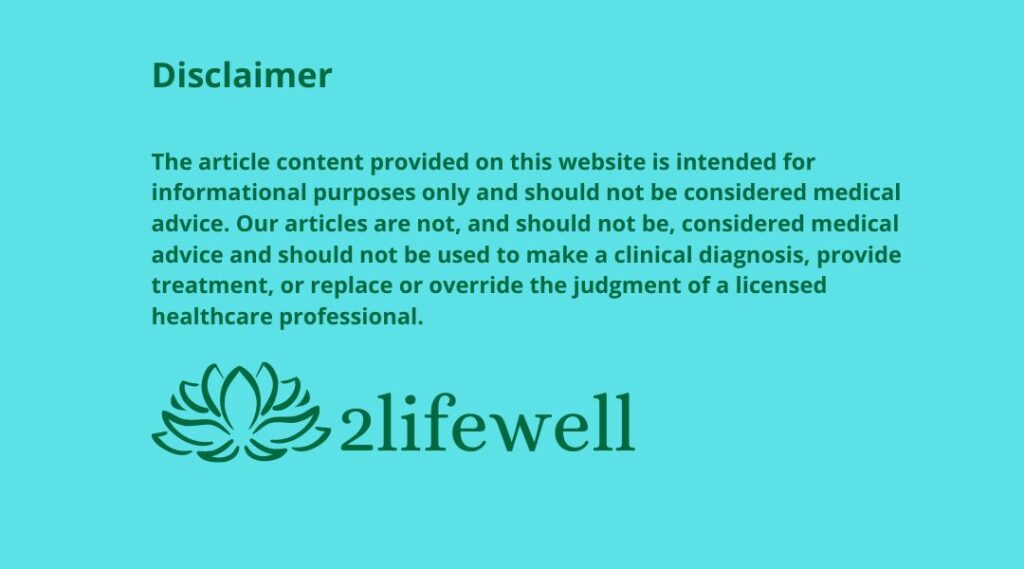Understanding Guided Meditation
Guided meditation is a powerful practice that offers a structured approach to meditation, making it accessible and enjoyable for beginners and experienced practitioners alike. In guided meditation, a skilled facilitator—often referred to as a guide or instructor—leads participants through a series of visualizations, affirmations, and relaxation techniques designed to cultivate mindfulness, reduce stress, and promote inner peace.
What is Guided Meditation?

Guided meditation is a form of meditation where an instructor or guide leads participants through a series of mental imagery, relaxation techniques, and mindfulness exercises. Unlike traditional meditation, where practitioners meditate in silence or with the aid of meditation music, guided meditation provides verbal guidance and prompts to help individuals navigate their meditation practice.
The Origins of Guided Meditation
Guided meditation draws from ancient spiritual practices that have been used for centuries to promote relaxation, healing, and spiritual growth. These practices include guided imagery, visualization, and contemplative techniques found in various religious and cultural traditions around the world.
In ancient civilizations such as Egypt, Greece, and India, guided meditation was used as a means of connecting with higher consciousness, seeking guidance from divine beings, and accessing inner wisdom. In the East, practices such as yoga and qigong incorporate guided meditation as a way to balance the body’s energy systems and cultivate inner peace.
During the 20th century, guided meditation gained popularity in the West as a therapeutic tool for managing stress, anxiety, and chronic pain. Pioneers in the field of psychology, such as Carl Jung and Milton Erickson, explored the use of guided imagery and visualization techniques in psychotherapy to access the subconscious mind and promote healing.
In recent decades, guided meditation has become increasingly accessible through books, audio recordings, smartphone apps, and online platforms. Today, people from all walks of life turn to guided meditation as a practical and effective way to reduce stress, enhance well-being, and cultivate inner peace.
How Guided Meditation Differs from Traditional Meditation
While traditional meditation practices such as mindfulness meditation or mantra meditation involve silent sitting or focused attention, guided meditation adds an element of verbal guidance and visualization to the practice. Instead of meditating in silence or with the aid of ambient music, participants in guided meditation sessions listen to a guide who leads them through a series of instructions and imagery.
The role of the guide is to provide verbal cues, suggestions, and prompts to help participants relax, focus their attention, and deepen their meditation experience. The guide may lead participants through visualization exercises, relaxation techniques, or mindfulness practices designed to evoke feelings of calm, clarity, and well-being.
Guided meditation is particularly beneficial for beginners or those who struggle with traditional meditation practices due to racing thoughts, restlessness, or difficulty maintaining focus. The verbal guidance and structured format of guided meditation make it easier for individuals to relax, let go of distractions, and enter a state of deep relaxation and inner peace.
The Role of a Guide in Guided Meditation
In guided meditation, the guide plays a crucial role in facilitating the meditation experience for participants. The guide may be a trained meditation instructor, therapist, or mental health professional with expertise in guiding individuals through relaxation techniques and mindfulness practices.
The guide’s role is to create a safe and supportive environment for meditation, offering encouragement, guidance, and gentle reminders throughout the session. The guide may use a soothing and reassuring voice to help participants relax and let go of tension, guiding them through visualizations and imagery designed to promote relaxation, stress reduction, and inner peace.
The guide also serves as a facilitator of the meditation process, offering suggestions and prompts to help participants deepen their meditation experience. This may involve directing participants’ attention to their breath, guiding them through body scan exercises, or inviting them to visualize calming scenes or imagery.
Ultimately, the guide’s goal is to empower participants to cultivate mindfulness, self-awareness, and inner peace through guided meditation. By providing support, encouragement, and guidance, the guide helps participants navigate their meditation practice with greater ease and confidence.
Exploring Different Styles and Approaches to Guided Meditation
Guided meditation encompasses a variety of styles and approaches, each offering unique techniques and benefits to suit different preferences and needs. Here are some common styles and approaches to guided meditation:
- Visualization: Visualization guided meditations involve imagining vivid scenes, symbols, or experiences to evoke specific emotions or states of mind. Participants may be guided to visualize themselves in a peaceful natural setting, such as a tranquil forest or serene beach, or to imagine themselves achieving their goals or overcoming challenges.
- Body Scan: Body scan guided meditations involve systematically directing attention to different parts of the body, noticing sensations, and cultivating awareness of bodily experiences. Participants may be guided to scan their bodies from head to toe, paying attention to areas of tension, discomfort, or relaxation, and learning to release tension and promote relaxation.
- Breath Awareness: Breath awareness guided meditations focus on observing the breath as it naturally flows in and out of the body. Participants may be guided to notice the sensations of breathing, such as the rise and fall of the chest or the feeling of air passing through the nostrils, and to anchor their attention in the present moment through mindful breathing.
- Mindfulness: Mindfulness guided meditations involve cultivating present-moment awareness and non-judgmental acceptance of one’s thoughts, emotions, and bodily sensations. Participants may be guided to observe their thoughts as they arise, without getting caught up in them, and to cultivate a sense of spaciousness and openness in their awareness.
- Loving-Kindness: Loving-kindness guided meditations focus on cultivating feelings of compassion, empathy, and goodwill toward oneself and others. Participants may be guided to repeat phrases of loving-kindness and extend well-wishes to themselves, loved ones, and all beings, fostering a sense of connection and benevolence.
- Progressive Muscle Relaxation: Progressive muscle relaxation guided meditations involve systematically tensing and relaxing different muscle groups in the body to promote physical relaxation and release tension. Participants may be guided to tense each muscle group for a few seconds before releasing and allowing it to relax completely, promoting a deep sense of relaxation and ease.
- Sound Meditation: Sound meditation guided meditations incorporate sounds, such as music, nature sounds, or chanting, to promote relaxation and inner peace. Participants may be guided to focus their attention on the sounds as they arise and pass away, using them as a focal point for mindfulness and concentration.
- Guided Imagery: Guided imagery meditations involve using the power of imagination to create vivid mental images or scenarios that promote relaxation, healing, or personal growth. Participants may be guided to imagine themselves in a safe and serene environment, or to visualize themselves achieving their goals or overcoming challenges.
By exploring different styles and approaches to guided meditation, individuals can discover which techniques resonate most with them and incorporate them into their meditation practice to promote relaxation, stress reduction, and overall well-being.
The Benefits of Guided Meditation for Mental Health
Guided meditation offers a wide range of mental health benefits, making it a valuable tool for promoting emotional well-being and resilience. Here are some of the key benefits of guided meditation:
- Stress Reduction: Guided meditation is highly effective in reducing stress levels by activating the body’s relaxation response. Through relaxation techniques and mindfulness practices, guided meditation helps lower levels of stress hormones such as cortisol and adrenaline, promoting a sense of calm and tranquility.
- Anxiety Relief: Guided meditation can alleviate symptoms of anxiety by promoting relaxation, grounding, and emotional regulation. By cultivating present-moment awareness and acceptance, guided meditation helps individuals manage anxious thoughts and feelings, reducing the intensity of anxiety and promoting a greater sense of ease and well-being.
- Improved Mood: Regular practice of guided meditation has been shown to improve mood and emotional well-being. By fostering a sense of inner peace, contentment, and gratitude, guided meditation helps individuals cultivate a more positive outlook on life and navigate difficult emotions with greater resilience and equanimity.
- Enhanced Emotional Resilience: Guided meditation strengthens emotional resilience by teaching individuals how to respond to challenges with greater clarity, compassion, and equanimity. By cultivating mindfulness and self-awareness, guided meditation empowers individuals to navigate life’s ups and downs with grace and resilience, rather than reacting impulsively or becoming overwhelmed by difficult emotions.
- Increased Self-Compassion: Guided meditation promotes self-compassion—the ability to treat oneself with kindness, understanding, and acceptance, especially during times of struggle or suffering. By fostering a sense of inner warmth and self-care, guided meditation helps individuals develop a more compassionate and supportive relationship with themselves, leading to greater emotional well-being and self-esteem.
- Better Sleep: Guided meditation can improve sleep quality by promoting relaxation, reducing stress, and calming the mind. By incorporating guided meditation into their bedtime routine, individuals can create a sense of calm and tranquility that prepares them for a restful night’s sleep, leading to improved sleep quality and overall well-being.
- Enhanced Cognitive Function: Regular practice of guided meditation has been linked to improved cognitive function, including enhanced attention, concentration, and memory. By training the mind to focus and sustain attention, guided meditation helps individuals sharpen their mental faculties and perform tasks with greater clarity and efficiency.
- Pain Management: Guided meditation can be effective in managing chronic pain by promoting relaxation, reducing muscle tension, and shifting the focus away from the sensation of pain. By cultivating mindfulness and acceptance, guided meditation helps individuals develop a more adaptive response to pain, leading to improved pain management and quality of life.
Overall, guided meditation offers a holistic approach to mental health and well-being, providing individuals with practical tools and techniques to promote relaxation, reduce stress, and cultivate emotional resilience.
Scientific Research on the Effectiveness of Guided Meditation
Scientific research has increasingly recognized the effectiveness of guided meditation in promoting mental health and well-being. Numerous studies have explored the impact of guided meditation on various aspects of mental health, providing valuable insights into its therapeutic benefits. Here are some key findings from scientific research on the effectiveness of guided meditation:
- Stress Reduction: Research has consistently shown that guided meditation is highly effective in reducing stress levels. Studies have demonstrated that regular practice of guided meditation can lead to significant reductions in perceived stress, as well as physiological markers of stress such as cortisol levels and blood pressure.
- Anxiety and Depression: Guided meditation has been found to be effective in alleviating symptoms of anxiety and depression. Research indicates that guided meditation can reduce symptoms of anxiety and depression by promoting relaxation, mindfulness, and emotional regulation, leading to improvements in mood and overall well-being.
- Sleep Improvement: Guided meditation has been shown to improve sleep quality and reduce insomnia symptoms. Studies have found that guided meditation can help individuals fall asleep faster, stay asleep longer, and experience deeper, more restorative sleep. By promoting relaxation and reducing stress, guided meditation creates a conducive environment for sleep and enhances sleep quality.
- Pain Management: Guided meditation has been found to be effective in managing chronic pain conditions such as fibromyalgia, arthritis, and back pain. Research suggests that guided meditation can reduce pain intensity and improve pain tolerance by promoting relaxation, shifting attention away from pain sensations, and enhancing coping strategies.
- Emotional Regulation: Guided meditation has been shown to improve emotional regulation skills, helping individuals manage difficult emotions such as anger, sadness, and frustration more effectively. Research indicates that guided meditation can increase emotional awareness, reduce emotional reactivity, and foster a greater sense of calm and equanimity in the face of challenging situations.
- Cognitive Function: Guided meditation has been linked to improvements in cognitive function, including attention, memory, and executive function. Studies have found that regular practice of guided meditation can enhance cognitive performance by promoting mental clarity, focus, and cognitive flexibility.
- Brain Plasticity: Neuroscientific research has demonstrated that guided meditation can induce positive changes in brain structure and function. Studies using neuroimaging techniques such as MRI have shown that guided meditation can lead to structural changes in the brain associated with improved mood regulation, stress resilience, and emotional well-being.
Overall, scientific research provides robust evidence supporting the effectiveness of guided meditation as a therapeutic intervention for promoting mental health and well-being. By incorporating guided meditation into their daily routine, individuals can harness its transformative power to cultivate greater resilience, inner peace, and overall quality of life.
Common Misconceptions About Guided Meditation
Despite its growing popularity and widespread use, guided meditation is sometimes surrounded by misconceptions and misunderstandings. Addressing these misconceptions can help individuals better understand the practice and make informed decisions about incorporating it into their lives. Here are some common misconceptions about guided meditation:
- Guided Meditation is Only for Spiritual or Religious Purposes: While guided meditation has roots in spiritual and religious traditions, it is not inherently tied to any specific belief system. Guided meditation can be secular in nature and is accessible to people of all backgrounds and beliefs. It can be practiced for personal growth, stress reduction, and overall well-being, independent of any religious or spiritual affiliation.
- You Need Special Skills or Abilities to Practice Guided Meditation: Guided meditation is accessible to everyone, regardless of experience level or background. You do not need any special skills or abilities to practice guided meditation—simply follow the instructions provided by the guide and allow yourself to relax and be present in the moment. Guided meditation is a skill that can be developed over time with regular practice and patience.
- Guided Meditation Requires a Clear Mind: One common misconception about meditation, in general, is that you need to have a clear mind or stop your thoughts entirely to practice effectively. In reality, guided meditation encourages acceptance of whatever thoughts or sensations arise during the practice. The goal is not to stop thinking but to observe thoughts without judgment and gently return your focus to the present moment.
- Guided Meditation is Passive: Some people mistakenly believe that guided meditation is a passive activity where you simply listen to the guide’s voice without actively participating. In reality, guided meditation is an interactive process that requires active engagement and participation. While the guide provides instructions and guidance, it is up to the individual to engage with the practice, focus their attention, and cultivate mindfulness.
- Guided Meditation is Time-Consuming: Another misconception about guided meditation is that it requires a significant time commitment to be effective. While longer meditation sessions can be beneficial, even short guided meditation sessions can have profound effects on mental health and well-being. You can tailor your guided meditation practice to fit your schedule, whether it’s a few minutes during a break or a longer session before bed.
- Guided Meditation is Only for Relaxation: While guided meditation is often used for relaxation and stress reduction, it offers a wide range of benefits beyond just relaxation. Guided meditation can improve emotional regulation, enhance self-awareness, promote empathy and compassion, and foster personal growth and transformation. Depending on the focus and intention of the practice, guided meditation can be used to cultivate various qualities and states of mind.
- You Must Achieve a Certain State of Mind: Some people believe that they need to achieve a specific state of mind, such as deep relaxation or inner peace, to benefit from guided meditation. In reality, guided meditation is about being present with whatever arises in the moment, whether it’s feelings of calmness, restlessness, joy, or sadness. There is no “right” or “wrong” way to experience guided meditation—simply be open to whatever unfolds during the practice.
Addressing these common misconceptions can help individuals approach guided meditation with an open mind and a spirit of curiosity, allowing them to experience its full range of benefits and transformative potential.
Practical Tips for Maximizing Your Guided Meditation Practice

Guided meditation is a powerful tool for enhancing mental well-being and cultivating inner peace. To get the most out of your guided meditation practice, consider incorporating the following practical tips:
- Create a Tranquil Environment: Find a quiet and comfortable space where you can meditate without distractions. Create an atmosphere of tranquility by dimming the lights, playing soft music or nature sounds, and using cushions or blankets for added comfort.
- Use Quality Audio Equipment: Enhance your meditation experience by using headphones or external speakers to listen to the guided meditation. This ensures optimal audio quality and immersion in the practice.
- Establish a Consistent Routine: Set aside dedicated time for your guided meditation practice each day. Consistency is key to developing a regular meditation habit, so choose a time that works for you and commit to it.
- Set Intentions for Your Practice: Before beginning your meditation, set clear intentions for what you hope to achieve or explore during the session. Whether it’s relaxation, stress relief, or personal growth, having a specific focus can enhance the effectiveness of your practice.
- Cultivate Openness and Curiosity: Approach your guided meditation practice with an open mind and a spirit of curiosity. Embrace each moment as an opportunity for learning and self-discovery, and be open to whatever arises during the practice.
- Practice Patience and Compassion: Be patient and compassionate with yourself as you navigate your meditation practice. Meditation is a skill that develops over time, so be gentle with yourself and celebrate your progress along the way.
- Stay Present and Grounded: Throughout your meditation, focus on staying present and grounded in the moment. Use the breath as an anchor to bring your attention back whenever your mind wanders, and cultivate awareness of your thoughts, emotions, and sensations without judgment.
- Extend Mindfulness Beyond the Session: Incorporate mindfulness into your daily life by bringing awareness to your activities and experiences. Notice moments of mindfulness throughout your day, whether it’s during daily tasks, interactions with others, or moments of solitude.
- Reflect on Your Experience: After each meditation session, take a few moments to reflect on your experience. Notice any insights, feelings, or sensations that arose during the practice, and consider how you can apply them to your life off the cushion.
- Stay Consistent: Consistency is key to reaping the benefits of guided meditation. Make a commitment to practice regularly, even if it’s just for a few minutes each day. Over time, you’ll notice improvements in your mood, stress levels, and overall well-being as you continue to nurture your meditation practice.
By incorporating these practical tips into your guided meditation practice, you can enhance your experience, deepen your practice, and unlock the transformative power of meditation for your mental, emotional, and physical well-being.
Guided meditation offers a path to inner peace, emotional balance, and overall well-being. By embracing the practice and incorporating these practical tips into your routine, you can harness the transformative power of meditation to cultivate a more mindful, resilient, and fulfilling life.
Remember, guided meditation is not about achieving perfection or reaching a certain state of mind—it’s about showing up for yourself with kindness and curiosity, moment by moment. As you continue on your meditation journey, may you find greater clarity, calmness, and compassion in every breath.
Books:
- “Meditation for Beginners” – Jack Kornfield- https://amzn.to/3VnvWBf
- Kornfield, a renowned meditation teacher, offers a practical and accessible guide for beginners, exploring how guided meditation can lead to mental fulfillment.
- “Wherever You Go, There You Are: Mindfulness Meditation in Everyday Life” – Jon Kabat-Zinn
- Kabat-Zinn, a pioneer in introducing mindfulness meditation to the West, discusses the practice of guided meditation and its benefits for the mind and spirit. – https://amzn.to/3V7KinX
- “Real Happiness: The Power of Meditation” – Sharon Salzberg
- Salzberg offers a 28-day meditation program that includes guided practices, showing how these techniques can promote mental balance and satisfaction. –https://amzn.to/3V7iVdP
- “The Miracle of Mindfulness: An Introduction to the Practice of Meditation” – Thich Nhat Hanh
- This classic book by Thich Nhat Hanh presents guided meditation practices that can help you achieve a state of mental fulfillment and inner peace. https://amzn.to/4aLTtAz
- “The Mindful Way through Depression: Freeing Yourself from Chronic Unhappiness” – Mark Williams, John Teasdale, Zindel Segal, and Jon Kabat-Zinn – https://amzn.to/4e4jBcA
- The authors offer guided meditation practices specifically for dealing with depression and promoting mental health.
Scientific articles:
- “Effects of guided mindfulness meditation on anxiety: a meta-analysis” – Eberth & Sedlmeier (2012)
- This study analyzes how guided meditation can reduce anxiety and contribute to greater mental fulfillment.
- “Mindfulness meditation and positive psychology” – Shapiro, Carlson, Astin, & Freedman (2006)
- Explores the intersection between mindfulness meditation, including guided meditations, and positive psychology, highlighting its benefits for mental fulfillment.
- “The impact of mindfulness-based stress reduction program on mental health of various populations” – Grossman, Niemann, Schmidt, & Walach (2004)
- Analyzes the effects of guided meditation in the context of the Mindfulness-Based Stress Reduction (MBSR) program in diverse populations.
- “Mindfulness-based cognitive therapy for depression: Replication and exploration of differential relapse prevention effects” – Teasdale et al. (2000)
- Studies how mindfulness-based cognitive therapy, which includes guided meditations, can prevent relapse in patients with depression.
- “A randomized controlled trial of mindfulness meditation for chronic pain” – Zeidan et al. (2010)
- This article examines the effects of guided meditation on chronic pain management and its impact on mental health.
Book Chapters:
- “The Healing Power of Mindfulness” – Chapter on guided meditation by Jon Kabat-Zinn (2018)
- Explores the techniques and benefits of guided meditation for mental and emotional healing. https://amzn.to/3x04joA
- “The Relaxation and Stress Reduction Workbook” – Chapter on guided meditation by Martha Davis, Elizabeth Robbins Eshelman, and Matthew McKay (2008)
- Offers a variety of guided meditation techniques to reduce stress and improve mental well-being. https://amzn.to/3wVL8fJ
- “Handbook of Mindfulness: Theory, Research, and Practice” – Capítulo sobre intervenções de mindfulness guiadas por Kirk Warren Brown, J. David Creswell, and Richard M. Ryan (2015)
- Discusses guided meditation practices and their effects on mental and emotional health. https://amzn.to/3X5QHTj

